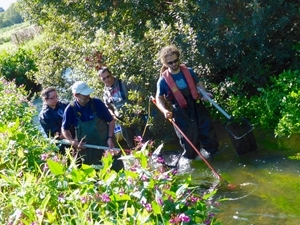 During the early 1990s, there was a widespread crash in numbers of Atlantic salmon. This event highlighted to our fisheries research group the importance of not only monitoring the number of returning adults but also the number of emigrating smolts. By monitoring both smolts leaving the river and adults returning, we are able to separately estimate freshwater production and marine mortality and therefore separate the effect of events happening at sea and in freshwater that affects the population.
During the early 1990s, there was a widespread crash in numbers of Atlantic salmon. This event highlighted to our fisheries research group the importance of not only monitoring the number of returning adults but also the number of emigrating smolts. By monitoring both smolts leaving the river and adults returning, we are able to separately estimate freshwater production and marine mortality and therefore separate the effect of events happening at sea and in freshwater that affects the population.
During late summer each year, 10,000 juvenile salmon and 2,000 brown trout are tagged with passive integrated transponder (PIT) tags. Then, between March and mid-May, we utilise a rotary screw trap at East Stoke on the Frome to recapture a percentage of the previous year’s PIT-tagged parr at night, when the bulk of the migration happens.
This is a huge undertaking for our small fisheries team, which means that we need a great deal of help from volunteers and students looking for experience in the field.
For further information, please visit the pages below or contact Luke Scott at ljscott@gwct.org.uk.